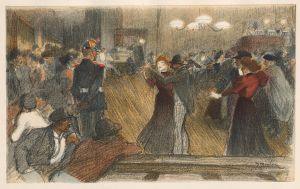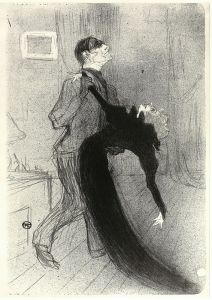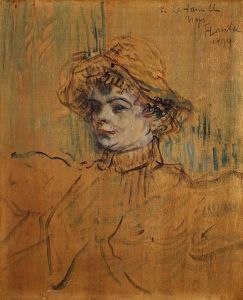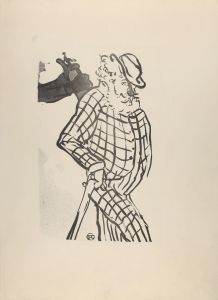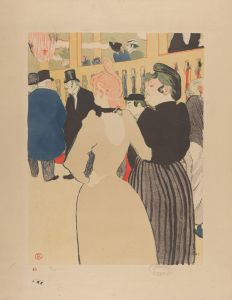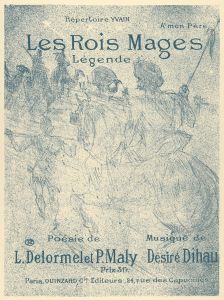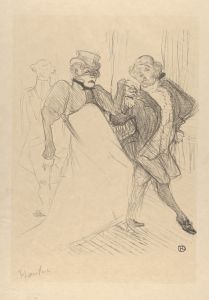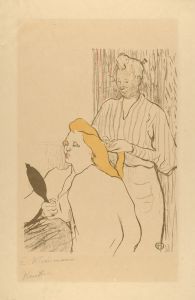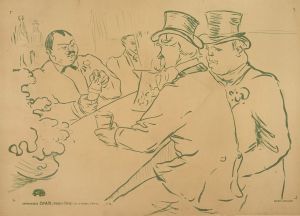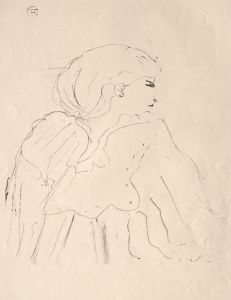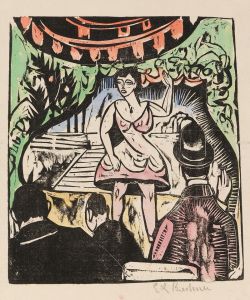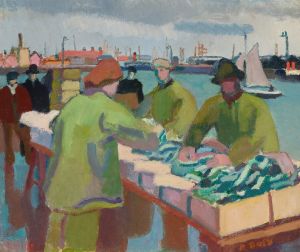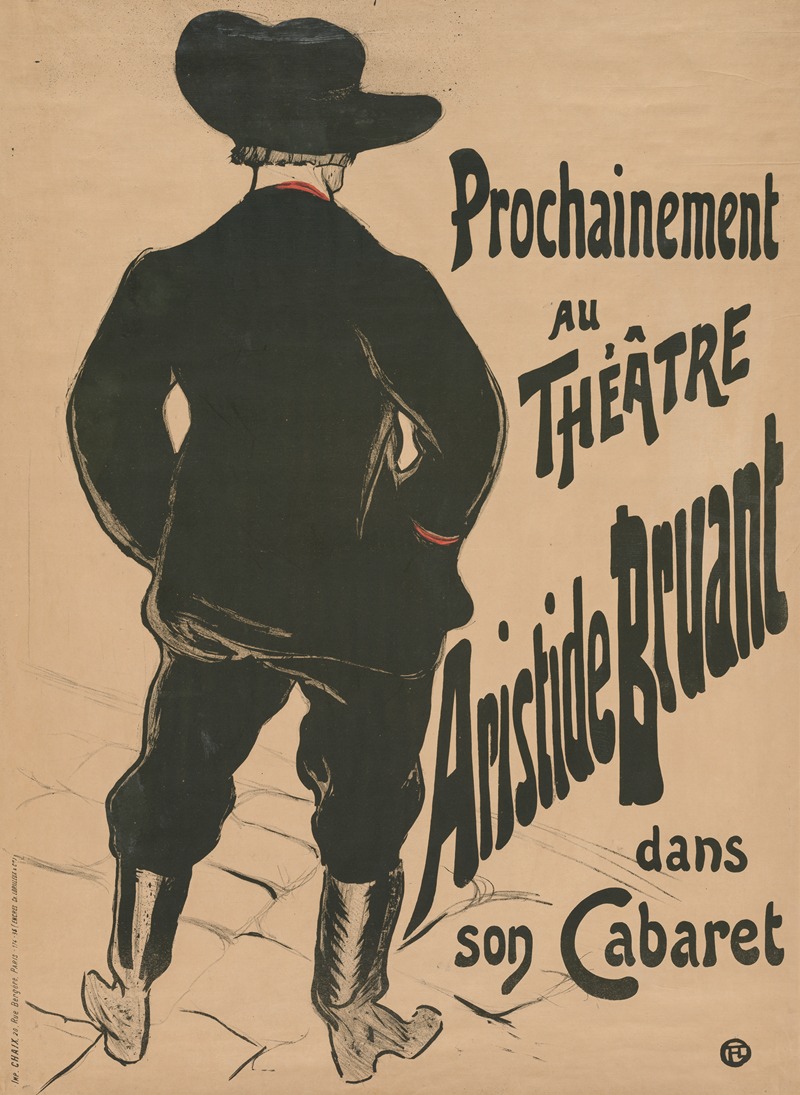
Bruant au Mirliton
A hand-painted replica of Henri de Toulouse-Lautrec’s masterpiece Bruant au Mirliton, meticulously crafted by professional artists to capture the true essence of the original. Each piece is created with museum-quality canvas and rare mineral pigments, carefully painted by experienced artists with delicate brushstrokes and rich, layered colors to perfectly recreate the texture of the original artwork. Unlike machine-printed reproductions, this hand-painted version brings the painting to life, infused with the artist’s emotions and skill in every stroke. Whether for personal collection or home decoration, it instantly elevates the artistic atmosphere of any space.
Henri de Toulouse-Lautrec, a prominent French painter, printmaker, and illustrator, is renowned for his vivid portrayals of Parisian nightlife in the late 19th century. One of his notable works is "Bruant au Mirliton," which features the famous cabaret singer and entertainer Aristide Bruant. This artwork is a quintessential example of Toulouse-Lautrec's ability to capture the essence of the bohemian lifestyle that characterized the Montmartre district of Paris during this period.
Aristide Bruant was a well-known figure in the Parisian entertainment scene, particularly associated with the cabaret Le Mirliton, which he owned. Bruant was not only a performer but also a songwriter and a master of self-promotion. His distinctive style, often characterized by a red scarf and a black cape, became iconic, and Toulouse-Lautrec's depiction of him helped cement this image in the public's imagination.
"Bruant au Mirliton" is a lithograph, a medium that Toulouse-Lautrec frequently employed to produce posters and prints that advertised the vibrant nightlife of Paris. The lithograph captures Bruant in his characteristic attire, exuding confidence and charisma. Toulouse-Lautrec's use of bold lines and striking colors in this work is typical of his style, which was influenced by Japanese ukiyo-e prints and the burgeoning Art Nouveau movement.
The collaboration between Toulouse-Lautrec and Bruant was mutually beneficial. Bruant's theatrical performances and sharp wit made him a popular subject for Toulouse-Lautrec, who was fascinated by the characters that populated the cabarets and dance halls of Montmartre. In turn, Toulouse-Lautrec's artwork contributed to Bruant's fame, as his posters were widely distributed and became synonymous with the lively and sometimes risqué atmosphere of Parisian cabarets.
Toulouse-Lautrec's portrayal of Bruant is not just a simple representation of a performer; it is an embodiment of the spirit of an era. The artist's keen observation skills and ability to capture the nuances of human expression are evident in this work. "Bruant au Mirliton" is more than a promotional piece; it is a snapshot of a cultural moment, reflecting the dynamic interplay between artist and subject, and the broader social and artistic movements of the time.
The lithograph is part of a larger body of work by Toulouse-Lautrec that documents the nightlife and entertainment culture of Paris. His works are celebrated for their innovative use of color and composition, as well as their ability to convey the energy and excitement of the scenes they depict. Toulouse-Lautrec's art provides valuable insights into the social fabric of late 19th-century Paris, capturing the vibrancy and diversity of its inhabitants.
Today, "Bruant au Mirliton" is recognized as an important piece in Toulouse-Lautrec's oeuvre, exemplifying his mastery of the lithographic process and his unique artistic vision. The work continues to be studied and admired for its historical significance and its contribution to the development of modern art. Toulouse-Lautrec's ability to immortalize figures like Aristide Bruant has ensured that both the artist and his subjects remain influential figures in the history of art.





